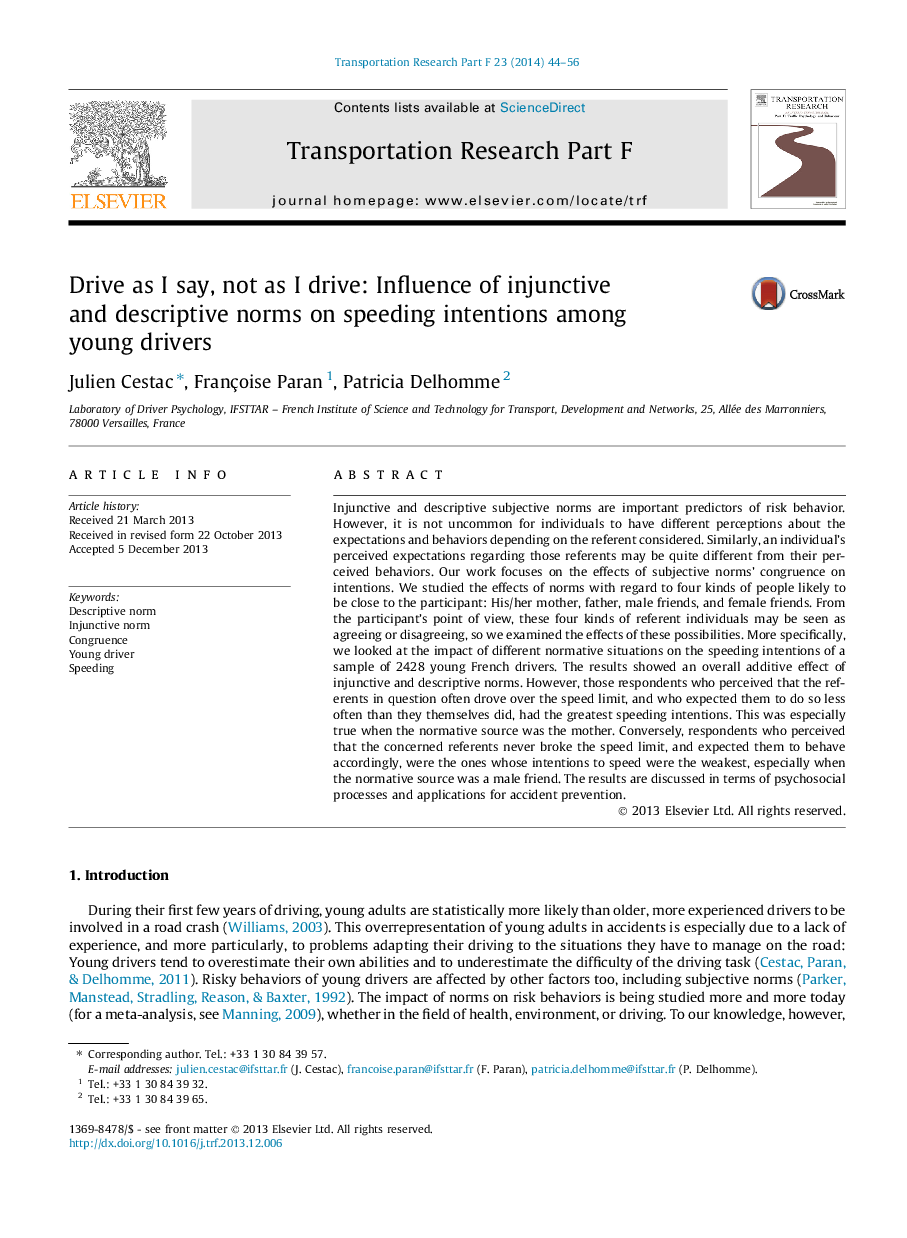| کد مقاله | کد نشریه | سال انتشار | مقاله انگلیسی | نسخه تمام متن |
|---|---|---|---|---|
| 897735 | 1472457 | 2014 | 13 صفحه PDF | دانلود رایگان |
• Young drivers perceive incongruent normative influences among their kinfolks.
• Injunctive and descriptive norms can be incongruent for a referent.
• Ambiguous “normative messages” are linked to stronger speeding intentions.
• A given “normative message” has a different effect depending on the referent.
Injunctive and descriptive subjective norms are important predictors of risk behavior. However, it is not uncommon for individuals to have different perceptions about the expectations and behaviors depending on the referent considered. Similarly, an individual’s perceived expectations regarding those referents may be quite different from their perceived behaviors. Our work focuses on the effects of subjective norms’ congruence on intentions. We studied the effects of norms with regard to four kinds of people likely to be close to the participant: His/her mother, father, male friends, and female friends. From the participant’s point of view, these four kinds of referent individuals may be seen as agreeing or disagreeing, so we examined the effects of these possibilities. More specifically, we looked at the impact of different normative situations on the speeding intentions of a sample of 2428 young French drivers. The results showed an overall additive effect of injunctive and descriptive norms. However, those respondents who perceived that the referents in question often drove over the speed limit, and who expected them to do so less often than they themselves did, had the greatest speeding intentions. This was especially true when the normative source was the mother. Conversely, respondents who perceived that the concerned referents never broke the speed limit, and expected them to behave accordingly, were the ones whose intentions to speed were the weakest, especially when the normative source was a male friend. The results are discussed in terms of psychosocial processes and applications for accident prevention.
Journal: Transportation Research Part F: Traffic Psychology and Behaviour - Volume 23, March 2014, Pages 44–56
